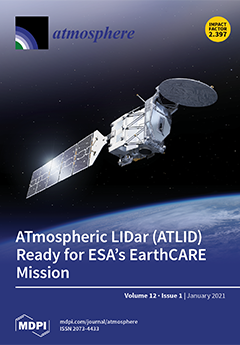Rural communities are affected by gaseous emissions from intensive livestock production. Practical mitigation technologies are needed to minimize emissions from stored manure and improve air quality inside barns. In our previous research, the one-time surficial application of biochar to swine manure significantly reduced emissions of NH
3 and phenol. We observed that the mitigation effect decreased with time during the 30-day trials. In this research, we hypothesized that bi-weekly reapplication of biochar could improve the mitigation effect on a wider range of odorous compounds using a larger scale and longer trials. The objective was to evaluate the effectiveness of biochar dose and reapplication on mitigation of targeted gases (NH
3, odorous, volatile organic compounds VOCs, odor, greenhouse gases (GHG)) from stored swine manure on a pilot-scale setup over 8-weeks. The bi-weekly reapplication of the lower biochar dose (2 kg/m
2) showed much higher significant percentage reductions in emissions for NH
3 (33% without and 53% with reapplication) and skatole (42% without and 80% with reapplication), respectively. In addition, the reapplication resulted in the emergence of a statistical significance to the mitigation effect for all other targeted VOCs. Specifically, for indole, the percentage reduction improved from 38% (
p = 0.47, without reapplication) to 78% (
p = 0.018, with reapplication). For phenol, the percentage reduction improved from 28% (
p = 0.71, without reapplication) to 89% (
p = 0.005, with reapplication). For p-cresol, the percentage reduction improved from 31% (
p = 0.86, without reapplication) to 74% (
p = 0.028, with reapplication). For 4-ethyl phenol, the percentage emissions reduction improved from 66% (
p = 0.44, without reapplication) to 87% (
p = 0.007, with reapplication). The one-time 2 kg/m
2 and 4 kg/m
2 treatments showed similar effectiveness in mitigating all targeted gases, and no statistical difference was found between the dosages. The one-time treatments showed significant percentage reductions of 33% and 42% and 25% and 48% for NH
3 and skatole, respectively. The practical significance is that the higher (one-time) biochar dose may not necessarily result in improved performance over the 8-week manure storage, but the bi-weekly reapplication showed significant improvement in mitigating NH
3 and odorous VOCs. The lower dosages and the frequency of reapplication on the larger-scale should be explored to optimize biochar treatment and bring it closer to on-farm trials.
Full article





